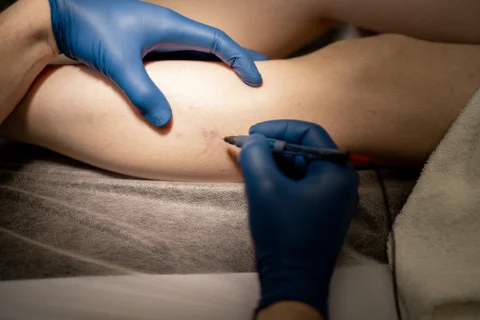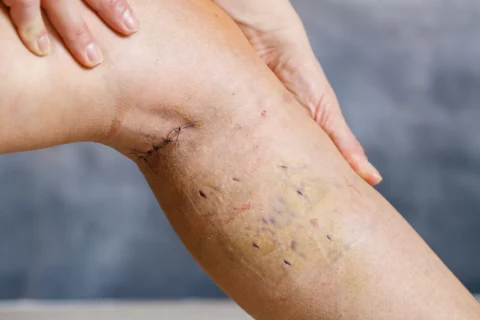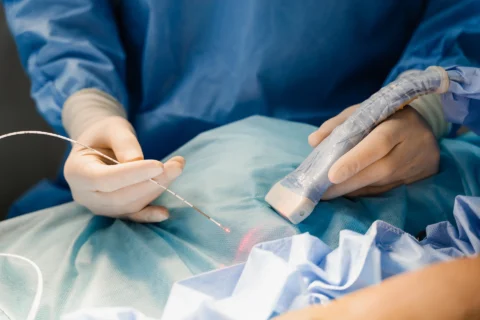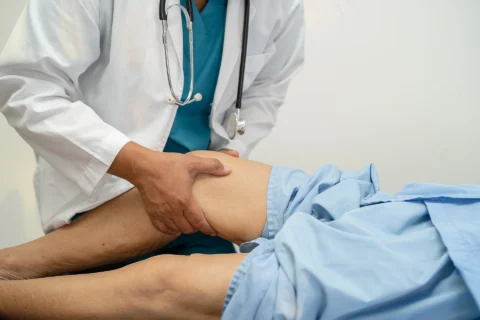Chronic venous insufficiency is a venous disease affecting more than 30% of adults in the United States. It is characterized by the weakening of valves causing venous reflux affecting the lower extremities’ superficial vein, deep vein, and saphenous vein systems. For its treatment, endovenous laser and radiofrequency ablation are among the most popular and productive techniques employed by many vein experts.
So why should you consider venous ablation treatment for chronic venous insufficiency? Vein ablation cauterizes the diseased vein using heat energy. This minimally-invasive procedure (i.e., RF ablation and endovenous laser ablation) are reported to improve the quality of life of a chronic venous insufficiency patient with little to no reported post-procedure downtime when compared to vascular surgery procedures.
Ablation Treatment to Treat Chronic Venous Insufficiency
Chronic venous insufficiency is also known as chronic venous disease or venous reflux. As these names imply, chronic venous insufficiency happens when the valves are not able to control backward blood flow or reflux, causing venous hypertension. The most common symptoms of chronic venous insufficiency are leg pain, varicose veins, spider veins, and in worse cases, venous leg ulcer.
Valve incompetence leads to vein disease and varicose veins which when left untreated, can lead to worse symptoms such as leg ulcer formation. Varicose veins and chronic venous insufficiency can also be caused by deep vein thrombosis, which is the excessive formation of blood clots in the veins. Compression therapy is the standard treatment procedure for chronic venous insufficiency.
In cases when the patient remains unresponsive to compression treatment, the next best thing is venous ablation.
Chronic Venous Insufficiency Ablation: How Does It Work?
Endovenous thermal ablation uses heat energy guided by imaging techniques to cauterize the affected varicose veins.
The endovenous ablation procedure is simple and can be performed in an outpatient setting. Using ultrasound imaging, the technician sterilizes the treatment area and applies local anesthesia to the insertion area. Multiple anesthetic shots might be needed to fully numb the diseased vein of the patient.
The inner lining of the patient’s veins will then be accessed by a laser fiber or a radiofrequency catheter, which will introduce heat into the affected veins. Through heat energy, the damaged vein will be cauterized and closed off without causing severe bleeding and bruising. After the treated vein collapses, the blood flow is then rerouted to healthy veins, leading to the disappearance of visible varicose veins.
Depending on the size of the treatment area, this endovenous ablation procedure typically lasts about 30 to 60 minutes. After the procedure, a specialist will wrap a bandage around the area. This will then be replaced by a compression garment after 24 hours, which will exert pressure to induce healthy blood flow and reduce venous reflux in your legs.
After the endovenous ablation treatment, you are encouraged to return to your normal physical activity routine to improve your blood flow unlike in vascular surgery procedures. However, it is still not recommended for you to do strenuous activities a few days after your procedure.
Types of Endovenous Thermal Ablation Treatments
Through various technological advancements, experts recommend different types of endovenous ablation treatments for varicose veins and venous reflux depending on the needs of the patient. The two main types of endovenous ablation techniques are radiofrequency (RF) ablation and endovenous laser ablation.
1) Radiofrequency Ablation
RF ablation delivers thermal energy through a radiofrequency catheter which delivers heat from its tip to collapse the vein wall. This procedure is recommended for cases with moderately dilated saphenous vein systems.
RF ablation begins with the patient lying in a supine position. After sterilizing the treatment area and applying local and tumescent anesthesia to prevent heat transfer beyond the vein wall, the radiofrequency catheter is inserted into the affected vein. The heat generator is activated every 20 seconds, applying around 120 degrees Celsius cauterizing temperature until the entire vein is covered.
2) Endovenous Laser Ablation
Endovenous laser ablation is another treatment for varicose vein and spider vein protrusions that uses thermal energy to close off damaged veins. Instead of a heat-tipped catheter, it uses one with 810-nm or 940-nm diode laser fibers. After the varicose veins shrink, they are eventually absorbed in the body, and blood flow is rerouted to healthier veins.
Before the endovenous laser ablation procedure, the patient is asked to wear protective goggles to protect their eyes from the laser. Like RF ablation, endovenous laser ablation also uses ultrasound imaging to guide catheter insertion and tumescent anesthesia to numb the patient’s treatment area.
Endovenous laser ablation is typically recommended for large varicose veins (i.e., large dilated saphenous veins).
What Leg Veins Are Treated With Chronic Venous Insufficiency Ablation?
Chronic venous insufficiency occurs mostly in the leg vein systems (e.g., saphenous veins and deep veins) where gravity is strongest in preventing the normal upward blood flow from leg veins to the heart, causing varicose veins and spider veins. The legs are comprised of three vein systems: the superficial, perforating, and deep venous systems – all of which can be accessed through endovenous ablation.
- Superficial veins – these are veins located between the skin and the muscle tissues of the legs. It includes the telangiectasia veins, the reticular veins, the great saphenous vein, and the small saphenous vein systems.
- Deep veins – these are larger veins found beneath the muscle tissues and include the iliac veins, the femoral veins, and the inferior vena cava.
- Perforating veins – these are veins penetrating the muscles and connecting the deep and superficial vein tissues.
Other Minimally-Invasive Chronic Venous Insufficiency Treatment Options at Vein Center Doctor

Here at Vein Center Doctor, we provide a reliable outpatient vein treatment procedure that ensures each varicose vein patient can be treated without undergoing complicated vascular surgery. We perform conservative management and intervention treatments with little to no downtime.
1) Compression Therapy
Compression therapy is the standard treatment for varicose veins and chronic venous insufficiency. Through the use of compression bandages and stockings, the compliant patient enjoys the benefits of regulated blood flow and venous pressure, treating varicose veins without perforating procedures, and restoring normal valve function.
Compression therapy for varicose veins and chronic venous insufficiency is commonly used in conjunction with other intervention methods such as endovenous ablation and sclerotherapy to ensure optimal results.
2) Sclerotherapy
Sclerotherapy involves the use of sclerosing agents which aim to collapse the incompetent vein, forming scar tissue that will be eventually absorbed by the body. Like ablation, this leads to the rerouting of blood flow to healthier veins.
3) VenaSeal
VenaSeal is a new technology that uses an adhesive to close off the incompetent vein. Through ultrasound imaging, a catheter is inserted into the treatment area and saline solution is used to flush out blood clots in the vein before injecting the VenaSeal adhesive. Three centimeters of this adhesive is delivered every 3 seconds to ensure that the entire abnormal vein is closed off.
Vein Center Doctor: State-Of-The-Art Outpatient Vein Treatment Techniques

Chronic venous insufficiency and varicose veins are venous ailments that can disturb a patient’s quality of life when left untreated, progressing to symptoms such as a venous ulcer. Here at Vein Center Doctor, we offer a wide variety of advanced techniques for each stage of vein disease. Experts in our vein clinic ensure that each patient gets the treatment most appropriate for their cases, providing tailor-made procedures with optimal results and minimal downtime.
Worry no more about varicose veins and complex vascular surgery procedures with Vein Center Doctor’s outpatient vein treatments. Book an appointment now at 862-227-1143 (NJ) or 862-227-1054 (NY) for your free consultation.







